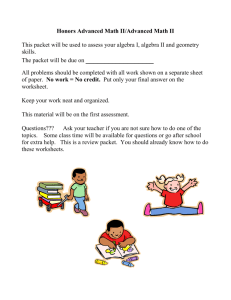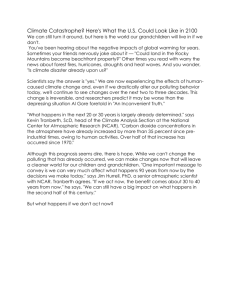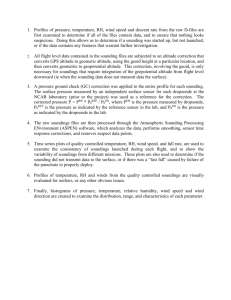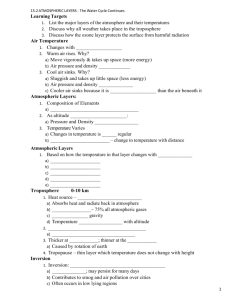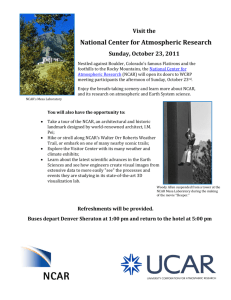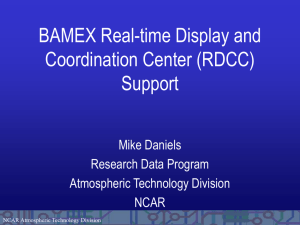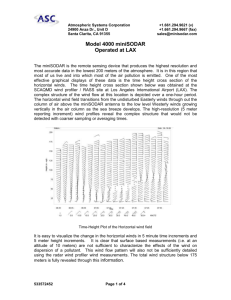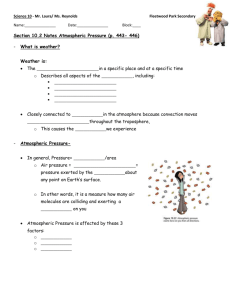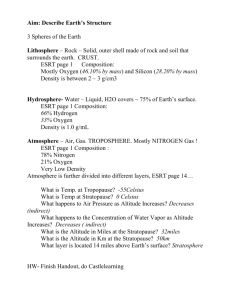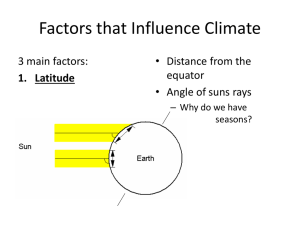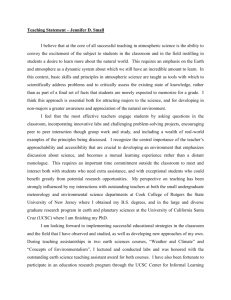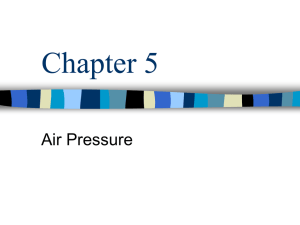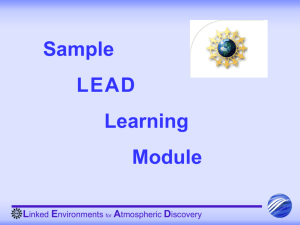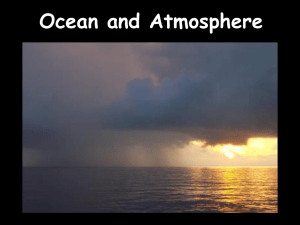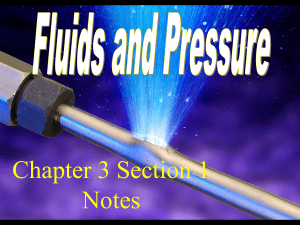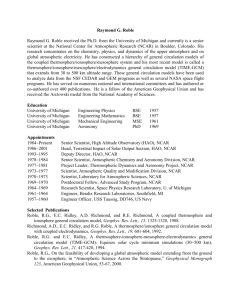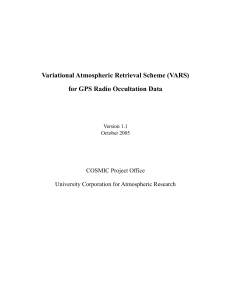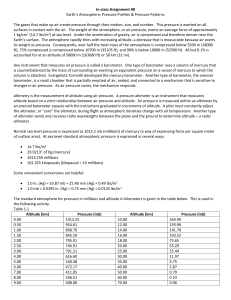Learning about Earth*s Atmosphere
advertisement
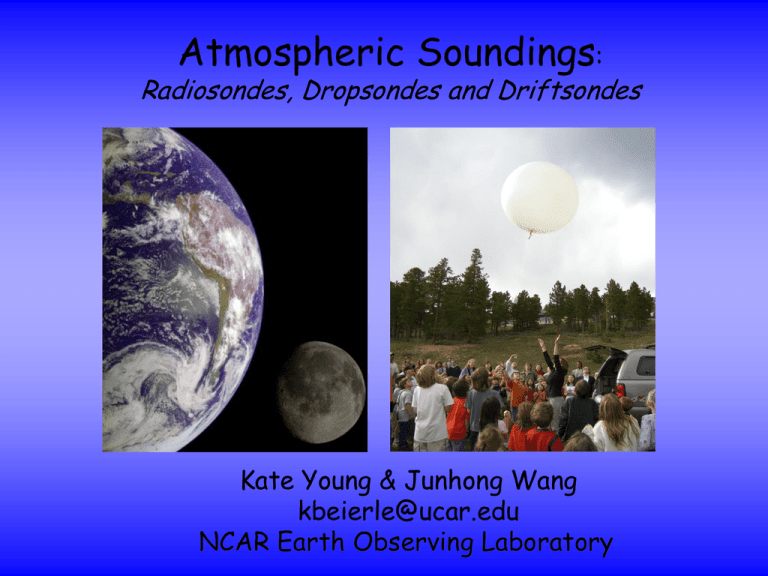
Atmospheric Soundings: Radiosondes, Dropsondes and Driftsondes Kate Young & Junhong Wang kbeierle@ucar.edu NCAR Earth Observing Laboratory National Center for Atmospheric Research Weather/Climate Societal Impacts Pollution/Air Chemistry Ocean/Atmosphere Space weather/Sun Earth Observing Laboratory Mission: Develop of state-of-the-art technologies for atmospheric research Deploy instruments for scientific research projects Data Services - providing high-quality project data for scientific advancement and discovery Discovery – promote curiosity about earth science and educate others on atmospheric research Atmospheric Profile Wind barbs show strength and direction of wind Space between lines represents the relative humidity Dew-point Temperature (degC) Atmospheric pressure at sea level is ~1000 millibars and decreases with height Temperature (degC) Moist Layer with high relative humidity THERMOSPHERE 54 Mesopause Altitude (mi) MESOSPHERE 30 Stratopause Maximum ~19 mi radiosonde height Average ~10 mi dropsonde height STRATOSPHERE 8 Tropopause TROPOSPHERE 0 -120 -80 -40 0 40 Temperature (deg F) 80 120 Radiosondes GPS – 1. allows us to track radiosondes 2. provide wind measurements Temperature & Relative humidity Pressure Antenna Windy downdraft NCAR GPS Dropsondes Licensee (Vaisala) makes ~ 5,000 per year Currently on 21 research aircraft Driftsondes Flight Altitude Iridium LEO Satellite Communications 125mb to 50mb (~58,000’) Gondola 20-50 Sonde Capacity Hurricane Research Courtesy of Dr. Chris Davis (NCAR/ASP) T-PARC (airborne) Sounding Systems Driftsonde Temperature versus Altitude (4 drops) from 30km! Nominal Driftsonde Drop altitude Nominal Falcon and DOTSTAR drop altitudes Nominal C-130 Drop altitude Nominal P-3 Drop altitude Courtesy of Terry Hock and Steve Cohn Number of Soundings 500 450 400 350 300 250 200 150 100 50 0 TCM90 GTE_TRACE CASP_II PRE_BOREAS TOGA_COARE KOFSE CEPEX AES_BASE DLR NASA_LITE MACAWS Snowband INDOEX MAP DYCOMS II EPIC CAMEX IV IHOP Crystal Face TELEX03 BAMEX ATREC Ocean Waves TELEX04 RICO RAINEX T-REX Progressive Science AMMA NAMMA TC4 GISMOS T-PARC (drift) T-PARC (drop) PLOWS PREDICT GRIP ITOP Concordiasi WISPAR EOL Dropsonde Projects 1990-2010 Total # of soundings= 8129 (1,577) 1990 1992 265 1993 1994 264 134 1995 1998 1999 17 102 247 2001 2002 363 462 2003 527 2004 2005 2006 102 395 686 Field Projects 2007 2008 2009 95 20 1,916 (558) (698) (648) 2010 2,283 Quality Control of Radio/Dropsonde Data In field data inspection by operator Individual examination raw data profiles warmer and drier sondes (sondes were launched in a parking lot, sfc met was set up in vegetation) T Apply Radiation Correction ASPEN Takes into account solar angle at time of launch and removes solar heating that could skew T. Provides analysis tools (skew-t diagrams, xy-plot) Removes suspect data pointsRH Performs smoothing Batch mode for processing large datasets Comparisons of prelaunch and surface data P wind speed Histograms of PTU and Wind Timeseries plots of PTU and Wind Wind direction Visually examine QC sounding profiles How is this data useful? It allows us to: • Examine changes in weather patterns • Create long term records for climate change research • Develop local severe storm, aviation, and marine forecasts • Improve weather prediction models using near real-time data assimilation • Validate satellite data • Provide feedback to EOL engineers on instrument performance

